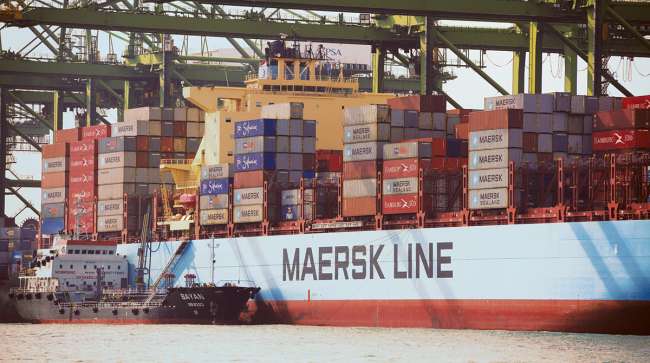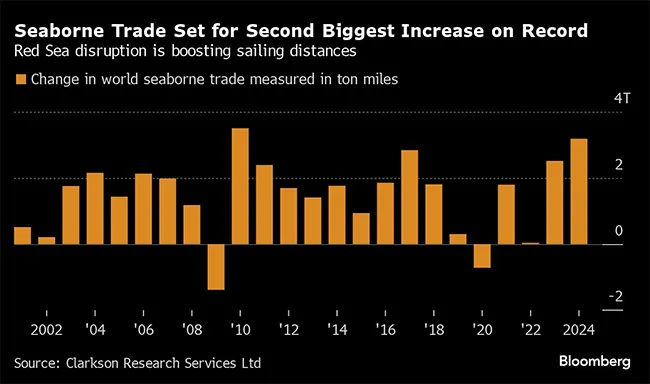Bloomberg News
Global Sea Transport Leaps Most Since 2010 After Attacks

[Stay on top of transportation news: Get TTNews in your inbox.]
A gauge of global sea transport is heading for its biggest annual jump since 2010 after attacks in the Red Sea have forced ships to travel longer distances.
Shipping activity measured in ton miles is set for the second largest annual increase on record as a result of geopolitical disruptions in the Middle East and Europe, according to Clarksons Research, a unit of the world’s largest shipbroker.
The marker, which multiplies the volume of cargo transported by the distance it sails, is heading for an increase of 5.1% compared to 2023, or 3.2 trillion ton miles.
The increase comes as vessels have had to reroute their usual journeys thousands of miles around the Horn of Africa to avoid the Red Sea and Gulf of Aden, where Yemen’s Houthi rebels are attacking ships. Those incidents have intensified in recent weeks after the group successfully sank a vessel using a sea drone.

The longer distances are likely to spell bad news for global efforts to reduce carbon emissions. At the same time, “an encouraging start to the year” in terms of trade volumes is part of the reason ton miles are up, suggesting the increase isn’t only related to longer journeys, Clarkson analyst Trevor Crowe wrote.
The impact of the Red Sea disruption on ton miles has been most acutely felt in container shipping, with about 690 ships currently sailing around the Cape of Good Hope. Average seaborne trade hauls will rise by 2.8% this year compared with 1.8% a year earlier.
Want more news? Listen to today's daily briefing below or go here for more info:




